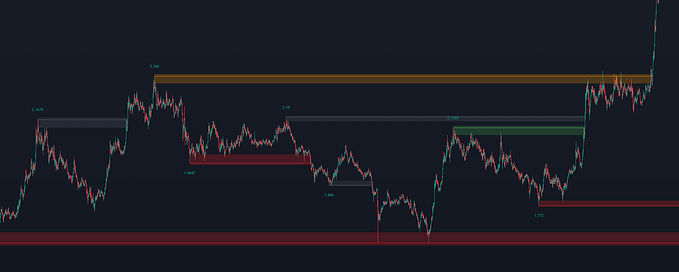
How AI is Reshaping Scientific Exploration
The Rise of Artificial Intelligence in Scientific Research
In recent years, the world of scientific research has witnessed a transformative revolution fueled by artificial intelligence (AI). Researchers are harnessing AI’s immense potential to make their work faster, better, and more productive, fundamentally altering the way we approach complex problems and explore the unknown. Imagine a world where AI serves as a superhuman research assistant, tirelessly sifting through mountains of data, solving equations, and unlocking the secrets of the universe.
One remarkable example of AI’s impact on research comes from the field of medicine. In 2019, scientists at the Massachusetts Institute of Technology (MIT) made a groundbreaking discovery by identifying a new antibiotic, halicin. Just this year, another team unveiled a second antibiotic, abaucin. What sets these discoveries apart is not only their potential to combat antibiotic-resistant bacteria but also the method of their identification. Both compounds were unearthed with the aid of AI models.
These AI models were trained on the chemical structures of known antibiotics and their effectiveness against bacteria in laboratory settings. By identifying links between chemical structures and antibacterial activity, these AI models could sift through millions of candidate compounds to pinpoint those most likely to combat the “superbugs.” In essence, AI acts as a powerful metal detector in the quest to find effective drugs, significantly expediting the initial trial-and-error phase of drug discovery.
The impact of AI extends far beyond medicine. Researchers tackling some of the world’s most complex and critical challenges, including weather forecasting, materials science, nuclear fusion, and more, are increasingly turning to AI to augment and accelerate their progress. This shift towards AI is driven by its potential to usher in a new era of discovery, acting as a multiplier for human ingenuity, as noted by Demis Hassabis, co-founder of Google DeepMind.
What’s particularly intriguing is the democratization of AI. While it was once confined to disciplines where computer programming skills were abundant, AI’s accessibility has dramatically expanded. With user-friendly AI tools and chatbots like ChatGPT, scientists from various fields can now harness the power of AI without extensive coding expertise.
In materials science, where the search for new compounds can be akin to finding a needle in a haystack, AI models like “autoencoders” are helping researchers identify materials with specific properties efficiently. By learning from existing knowledge about physical and chemical properties, AI narrows down the pool of candidates, saving both time and resources.
Moreover, AI is not just a tool for data analysis — it can also predict. Take the case of AlphaFold, developed by Google DeepMind, which predicts protein structures based on amino acid sequences. AlphaFold has generated a vast database of predicted protein structures, enabling researchers to understand diseases at a molecular level and design targeted treatments. This AI-driven approach has the potential to revolutionize fields like structural biology and drug discovery.
AI is also revolutionizing complex computer simulations, as seen in weather forecasting. Machine learning models can make predictions thousands of times faster and cheaper than traditional methods, with models like Pangu-Weather and FourCastNet achieving remarkable accuracy. These models not only expedite predictions but also offer the potential to tackle climate change at regional levels.
In nuclear fusion research, AI is helping control complex systems like tokamaks, making it easier to find the right magnetic field configuration to sustain fusion reactions. Furthermore, self-driving laboratories are automating and accelerating experiments, potentially making discoveries up to a thousand times faster.
Generative AI, which has gained prominence in recent years, is also playing a pivotal role in research. It can generate data, enhance low-resolution images, and even design molecules atom by atom. Pharmaceutical companies are already using AI to create drug candidates, some of which are in clinical trials.
The potential applications of AI in research are boundless. It can streamline data extraction from vast scientific literature, aid in integrating data from multiple experiments, and enhance the efficiency of theoretical physicists exploring new ideas. AI is not just about filling gaps in knowledge but also about pushing the boundaries of human understanding.
However, it’s essential to acknowledge that AI is not without limitations. It struggles with certain challenges, such as predicting the structures of disordered proteins. Despite these limitations, AI has undeniably made research more efficient and productive. Researchers who utilize AI, such as AlphaFold, are publishing more papers, and the productivity gains are significant.
In a recent report, the OECD highlighted that while AI is penetrating all domains of science, its full potential is yet to be realized. Accelerating research productivity through AI could be one of its most economically and socially valuable applications.
AI is propelling scientific research into uncharted territory, much like telescopes and microscopes expanded our understanding of the world. As we move forward, AI’s probabilistic, data-driven models will enable scientists to better model and comprehend complex systems. Fields like climate science and structural biology are shifting towards data-first approaches, allowing AI to unveil patterns, equations, and scientific understanding from vast datasets. While we’ve only scratched the surface of what AI can do, the next decade promises to be a transformative era as scientists dive deeper into the vast ocean of AI possibilities.







